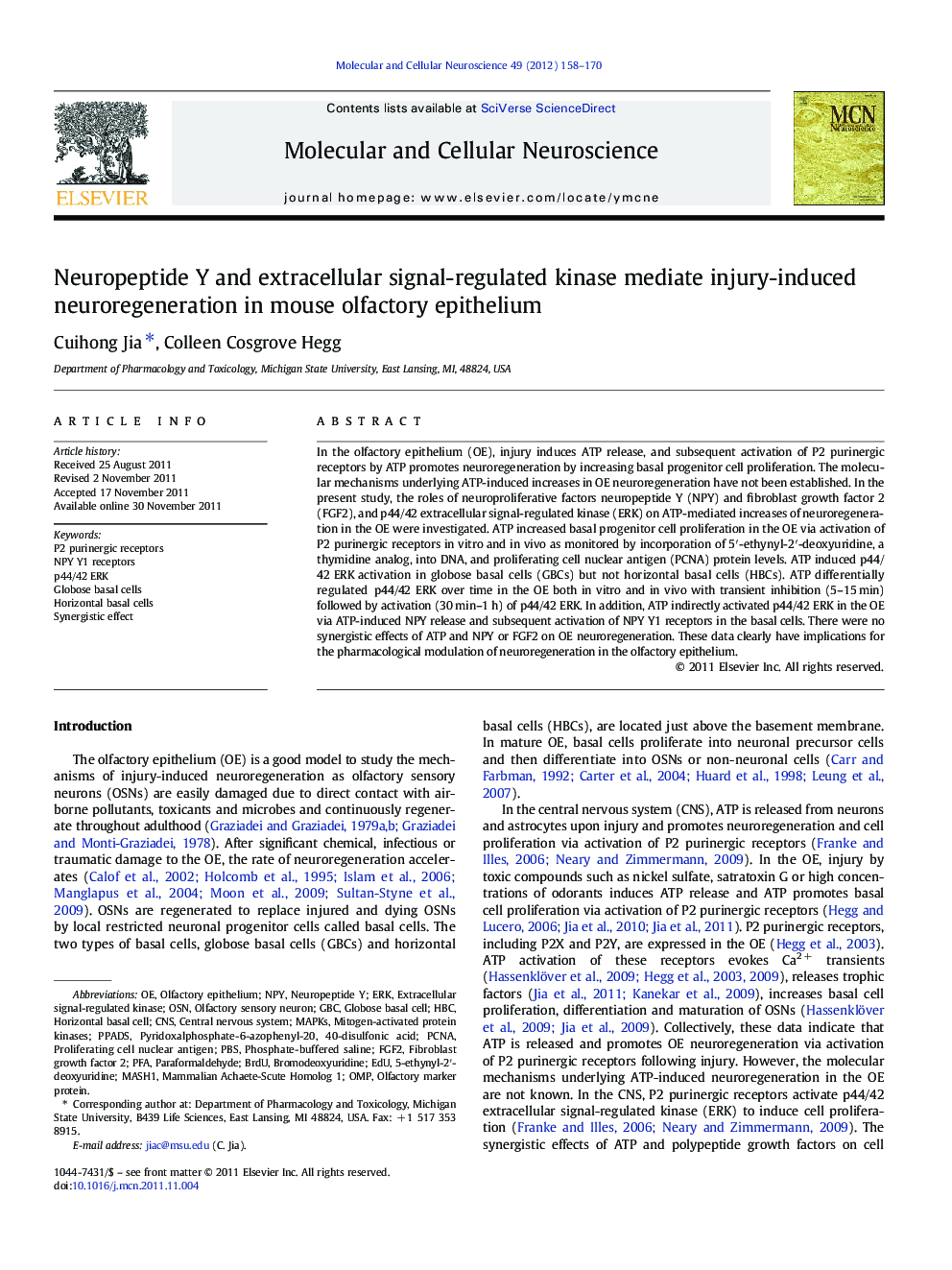| Article ID | Journal | Published Year | Pages | File Type |
|---|---|---|---|---|
| 10956547 | Molecular and Cellular Neuroscience | 2012 | 13 Pages |
Abstract
In the olfactory epithelium (OE), injury induces ATP release, and subsequent activation of P2 purinergic receptors by ATP promotes neuroregeneration by increasing basal progenitor cell proliferation. The molecular mechanisms underlying ATP-induced increases in OE neuroregeneration have not been established. In the present study, the roles of neuroproliferative factors neuropeptide Y (NPY) and fibroblast growth factor 2 (FGF2), and p44/42 extracellular signal-regulated kinase (ERK) on ATP-mediated increases of neuroregeneration in the OE were investigated. ATP increased basal progenitor cell proliferation in the OE via activation of P2 purinergic receptors in vitro and in vivo as monitored by incorporation of 5â²-ethynyl-2â²-deoxyuridine, a thymidine analog, into DNA, and proliferating cell nuclear antigen (PCNA) protein levels. ATP induced p44/42 ERK activation in globose basal cells (GBCs) but not horizontal basal cells (HBCs). ATP differentially regulated p44/42 ERK over time in the OE both in vitro and in vivo with transient inhibition (5-15Â min) followed by activation (30Â min-1Â h) of p44/42 ERK. In addition, ATP indirectly activated p44/42 ERK in the OE via ATP-induced NPY release and subsequent activation of NPY Y1 receptors in the basal cells. There were no synergistic effects of ATP and NPY or FGF2 on OE neuroregeneration. These data clearly have implications for the pharmacological modulation of neuroregeneration in the olfactory epithelium.
Keywords
GBCPCNAMASH1mammalian achaete-scute homolog 1HBCPPADSOMPFGF2PFANPYERKPBS5-ethynyl-2′-deoxyuridineEdUMAPKsProliferating Cell Nuclear AntigenSynergistic effectolfactory epitheliumBrdUbromodeoxyuridineCNSOSNcentral nervous systemfibroblast growth factor 2olfactory sensory neuronPhosphate-buffered salineparaformaldehydeolfactory marker proteinextracellular signal-regulated kinasemitogen-activated protein kinasesNeuropeptide Y
Related Topics
Life Sciences
Biochemistry, Genetics and Molecular Biology
Cell Biology
Authors
Cuihong Jia, Colleen Cosgrove Hegg,
